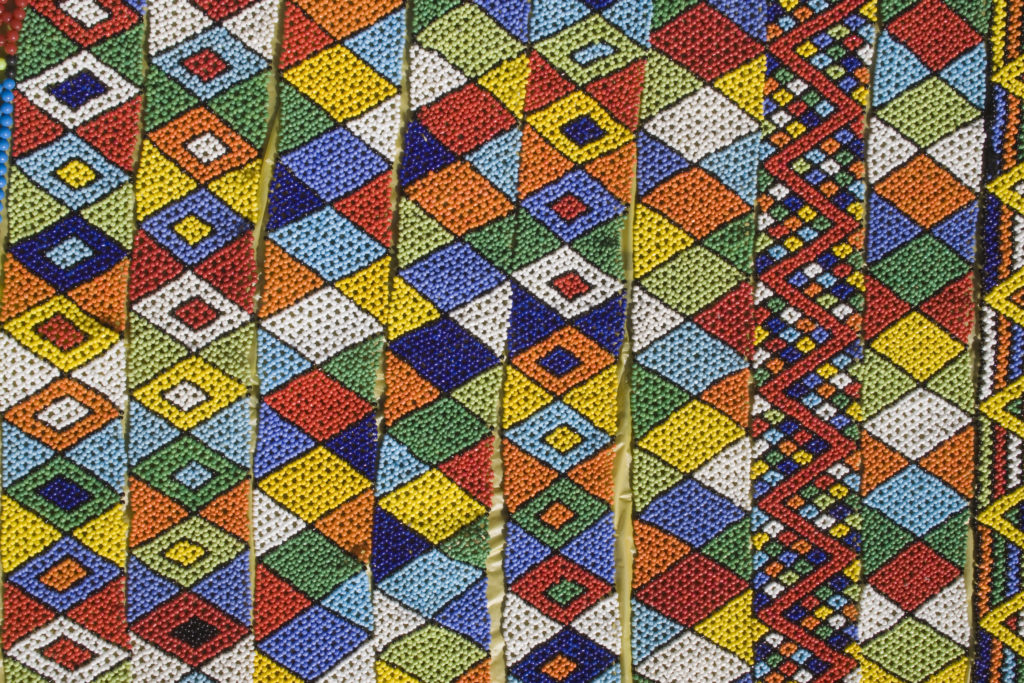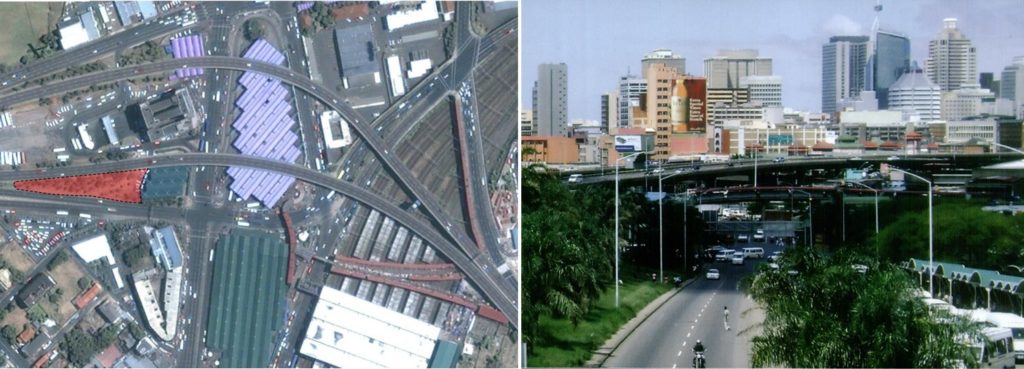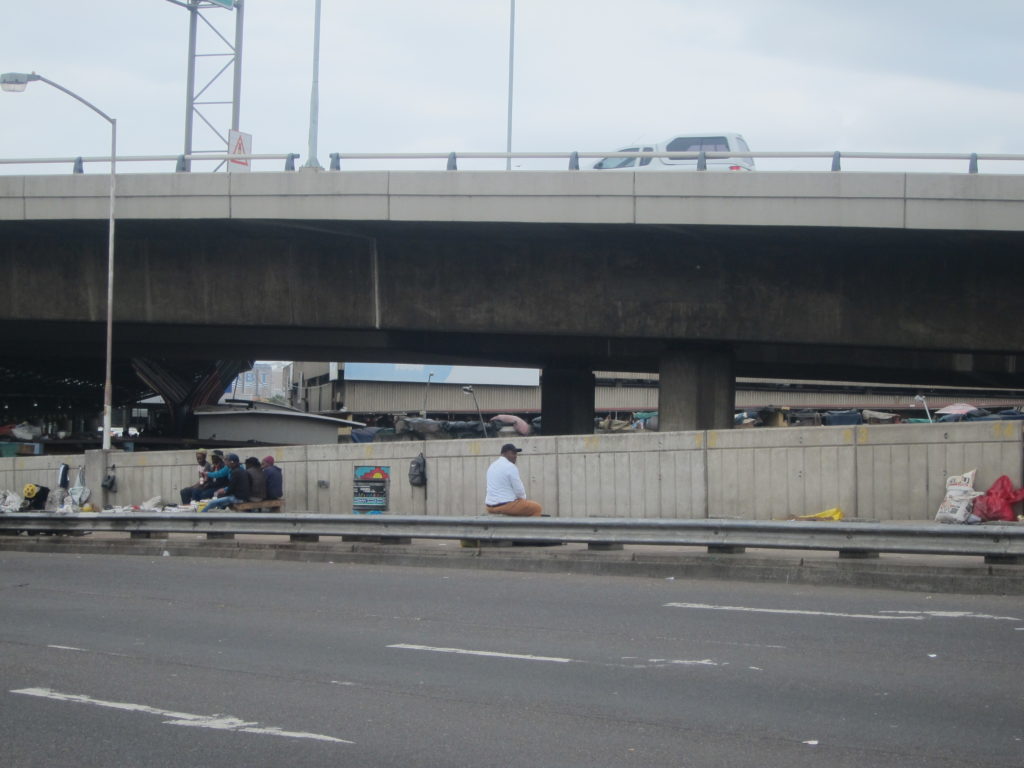Rebecca Plumbley
There are approximately 700 bead sellers in Warwick, the majority of whom are women. Most of the bead sellers are from areas outside of Durban such as Ndwedwe and Umzinyathi. They work in family units in their homesteads- coming in to the city on Fridays to sell their wares. In part, this is due to the high cost of transport into the inner city. As home-based workers, bead sellers can spend up to 12 hours a day working- with extended hours on Thursday nights before Friday sales. They show a clear business acumen as to what trading habits work best for them.
 Bead work on display at the market. Photo: Gerald Botha.
Bead work on display at the market. Photo: Gerald Botha.
The bead market originated in the 1990s on a grassy bank between Cannongate Road and the N3. It later moved to the current site, adjacent to the Verulam taxi rank on Brook Street and across from the entrance to the Traditional Herb and Medicine Market, where they traded from a clustering of shelters and low steps. Last week the bead sellers moved back into the space after it had received an infrastructure upgrade of a new roof.
 Left: Google Earth imagery from 2001 showing the grassy bank where the bead sellers were located (highlighted in red) before the new flyover was built. Right: Photograph of bank. Photo: Warwick Triangle: Working Together- Building Bridges.
Left: Google Earth imagery from 2001 showing the grassy bank where the bead sellers were located (highlighted in red) before the new flyover was built. Right: Photograph of bank. Photo: Warwick Triangle: Working Together- Building Bridges.
 Left: Brook Street shelters. Right: Traders displaying under the shelters. Photos: Gerald Botha.
Left: Brook Street shelters. Right: Traders displaying under the shelters. Photos: Gerald Botha.
The construction of the new roof has taken approximately a year. During this time the bead sellers traded from the sidewalk along Joseph Nduli Street. In Asiye eTafuleni’s experience it is critical to find viable alternate accommodation for traders during infrastructure upgrades. In this instance the City did not provide the bead sellers with a substitute space. This dislocation has proved to be frustrating for the traders.
 Joseph Nduli Street, where bead sellers have been located over the last year. Photo: Richard Dobson.
Joseph Nduli Street, where bead sellers have been located over the last year. Photo: Richard Dobson.
With the roof complete the pedestrian connection to the Lime and Imphepho market can now be re-established. This will also relieve the lime and imphepho traders of the logistical and economic challenges related to stock delivery that they have faced over the construction period.
 The bead sellers first day under a new roof. Photo: Richard Dobson.
The bead sellers first day under a new roof. Photo: Richard Dobson.
Upon reopening the site it is clear that space will be a challenge due to the high number of traders and the altering of the originally low platforms. The traders will need to be communal about how they arrange themselves and use the space.
 Bead sellers arranged themselves as best they could despite spatial challenges on their first day under the new roof. Photo: Rebecca Plumbley.
Bead sellers arranged themselves as best they could despite spatial challenges on their first day under the new roof. Photo: Rebecca Plumbley.
Like other areas in the market, such as the Bovine Head cooks and Mealie cooks, the new roof marks the 3rd iteration of infrastructure for the bead sellers. This evolution of infrastructure is indicative of the City’s continued support of informal trade and that infrastructure is a defining pathway to urban inclusion. Richard Dobson speaks about this encouraging development, saying:
“In this instance we’ve come from a muddy bank with incredible artworks displayed on newspaper to finally some substantial infrastructure which dignifies traditional craft. This shows that a generation beyond the founding beneficiaries has been sustained and is revealing a pattern of urban infrastructure development that is supporting and dignifying informal work in public space. The latter demonstrates that the use of public spaces for informal activities can be readily assimilated into an urban typology.”


